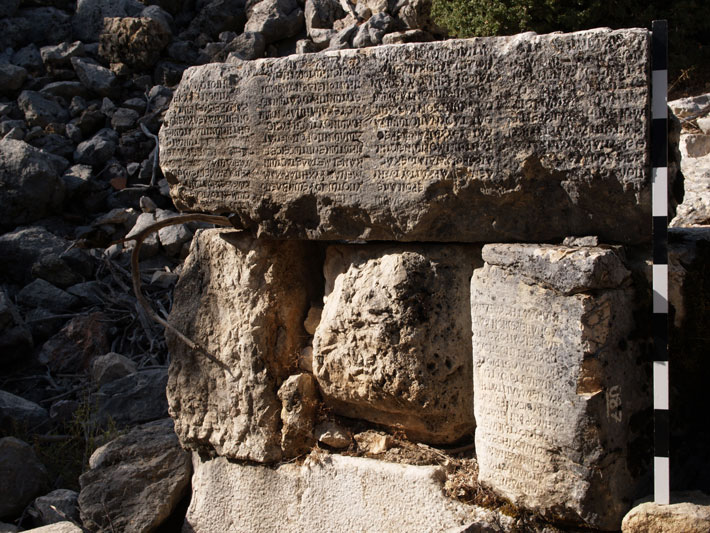by ERIC A. POWELL
 After the building was destroyed, its stone blocks were recycled as construction material PHOTO/Martin Bachmann
After the building was destroyed, its stone blocks were recycled as construction material PHOTO/Martin Bachmann
At a remote site in Turkey, archaeologists have found fragments of the ancient world’s most massive inscription
In the winter of 1884, two young French epigraphers were exploring the ancient Greco-Roman town of Oinoanda in southwestern Turkey and made an intriguing discovery. Scattered in the well-preserved ruins on a hilltop covered in cedar trees, they found five stone fragments inscribed with writings of a then-unknown philosopher, Diogenes of Oinoanda. On one of the fragments, Diogenes explains why he committed his thoughts to stone:
The majority of people suffer from a common disease, as in a plague, with their false notions about things, and their number is increasing. …I wished to use this stoa to advertise publicly the [medicines] that bring salvation.
The “medicines” Diogenes hoped to use to cure the “disease” of false understanding was Epicureanism, a system of philosophy founded in the fourth century B.C. by the Greek philosopher Epicurus. It was grounded in physics, held that the pursuit of pleasure is the highest good, and eschewed belief in divine intervention. The wealthy Diogenes had paid for the inscription to be carved on the wall of a stoa, or covered walkway, that probably once stood in one of the town’s public squares. He makes plain that he hoped Oinoandans and visitors alike would make a close study of his words and come away converts to the Epicurean school of thought. After the discovery of the five fragments was published and their significance understood, French and Austrian archaeological teams visited Oinoanda between 1885 and 1895. They recovered another 83 fragments of the inscription, which remains the only ancient philosophical text from the Greek and Roman world to have survived in its original form.
Archaeology for more
